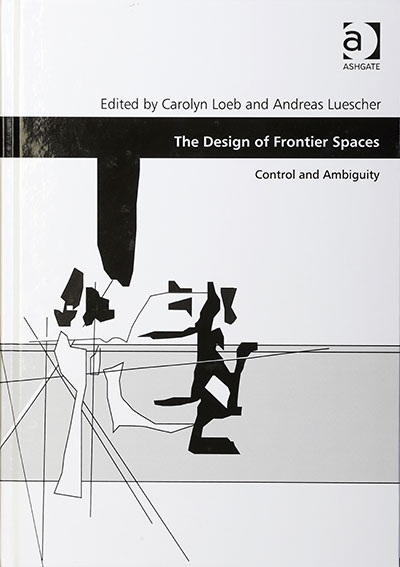Architecture at the border
Luescher co-edits book on global frontiers
 To Americans, the word “frontier” might typically elicit images of an area somewhere out West beyond which lay the wilderness, or might recall the opening line from the original “Star Trek” show: “Space: the final frontier” — both somehow conveying the idea of a place unknown and perhaps to be conquered.
To Americans, the word “frontier” might typically elicit images of an area somewhere out West beyond which lay the wilderness, or might recall the opening line from the original “Star Trek” show: “Space: the final frontier” — both somehow conveying the idea of a place unknown and perhaps to be conquered.
But, in fact, frontiers, in terms of borders, exist all over the world in many different forms, even within cities, and may change in response to political, economic and social forces at work. “The Design of Frontier Spaces: Control and Ambiguity,” edited by Dr. Andreas Luescher, graduate coordinator for the Department of Architecture and Environmental Design at BGSU, and Dr. Carolyn Loeb, an associate professor of art and architectural history at Michigan State University, takes a comprehensive look at frontiers around the globe and the ways in which design and architecture convey meaning about them.
Published in July by Ashgate Publishing Ltd., the book brings together scholarly work on the roles of political and “natural” borders throughout time and across nations, about how, more than being simply “a line through space,” borders and the built environment can both protect and imprison, about how architecture and design can either “make power, divinity and might manifest,” as Michel Foucault said, or utilize space to meet economic or political ends. Topics range from the sub-Saharan Africa’s new suburbs to the Netherbow Gate in 14th-century Edinburgh.
The Berlin Wall is probably the best known of modern borders, Luescher said. “Berlin is the most Americanized city outside the United States. It’s been visited by every president since Kennedy and has received the most gifts symbolic of our support, from a library to a conference hall to infrastructure, all symbolic of the city as the last frontier of the Allies.”
And even though the wall is no longer in place, “you still feel it,” he said. The book’s last section, “Spatial Ambiguity and (Dis)embodied Memory,” contains essays on the ways in which architecture, spatial arrangement and design preserve the memories of earlier frontiers and the cultures they helped create.
In places such as Belfast, Northern Ireland; Israel and Palestine, and parts of the U.S.-Mexico border, a physical wall is a stark and painful reminder of the divisions —political, religious and cultural — between peoples. But borders must always have crossings, and the book also deals with the ways, sometimes creative, in which those spaces have been dealt with.
The book grew out of a session on frontiers that Luescher and Loeb co-chaired at the 2012 conference of the Society of Architectural Historians. They were thinking primarily in terms of the Detroit-Windsor, Ontario, frontier, but the ideas the topic generated covered the globe.
Updated: 12/02/2017 12:48AM
